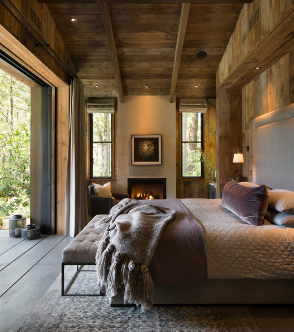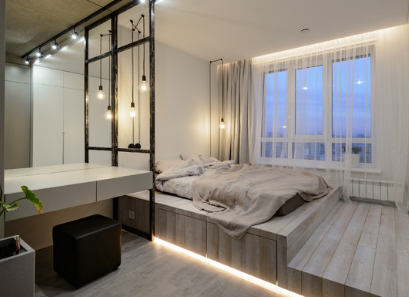We all need sleep, and many of us can take advantage of more, higher-quality sleep. Light can disrupt your sleep or help you sleep better. The trick is to know what kind of light to use in the bedroom and when and where to use it. The following tips will help you set up proper bedroom lighting for better mornings, safer nights, and hopefully be more productive in between.

Our bodies need the darkness of the night and the light of the morning. Blackout curtains can block out street lights and car headlights, making it easier for us to fall asleep, but they can also isolate us from the sunrise.
Consider using curtains that let in the morning sun, or use smart curtain controls to turn up the sun before your scheduled wake-up time. If you need to get up before the sun rises, you can also use a light-based alarm clock or smart lighting to trick your body.

Avoid bedside lamps or chandeliers with clear glass shades or visible bulbs to avoid bright light getting into your eyes at night. Also make sure that when you’re sitting or leaning back on the bed, the shadow is approximately equal to your eye level.
Recessed downlights above the bed can negatively impact sleep cycles by shining bright light directly onto the retina, so use them carefully and always set the dimmer to the lowest available setting.

The reading light can help you fall asleep reading your favorite books. Place them on a dimmer and try to dim it as much as possible, as too much light reflecting off the white pages of the book can cause problems.
Consider placing tablets, laptops, and phones in different rooms of your home, as the light they emit can affect your sleep.

Soft concave lighting or light reflecting off artwork and feature walls can provide the bedroom with an ideal warm glow. The indirect nature of these solutions will help limit the amount of light that enters the eye.
If you need a ceiling fan in your bedroom, it’s best to avoid one with a light. While many ceiling fans have shades, they usually won’t stop you from looking directly at the bulb – and this light can disrupt the circadian rhythm.

In the middle of the night, we may need lights to navigate, especially if we do a good job of darkening the room. The best light is under our eyes and on the floor, like a step lamp. Light, such as from under the bed, also provides us with visual cues of space that can significantly improve our balance and reduce falls.
Bedroom lighting is designed in layers so you can change with the time of day. Lighting can help your space look beautiful, feel comfortable, and provide the right light at the right time.
Bedroom lighting layering. Bedside lamps, bay lighting, artwork spotlights, wall lamps, and step lamps can all be combined to create a beautiful and well-lit room.
Finally, lighting controls such as dimmers and programmable intelligence systems make it easier to limit night light, increase morning brightness, and set the right mood in between.

